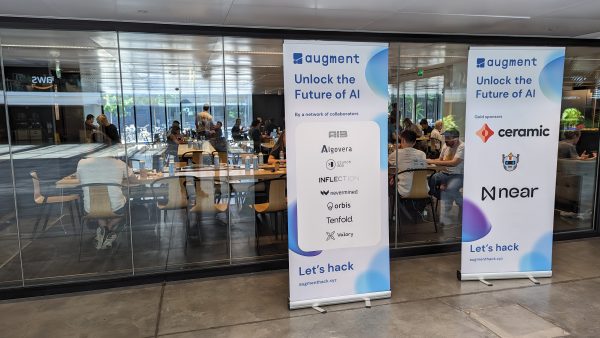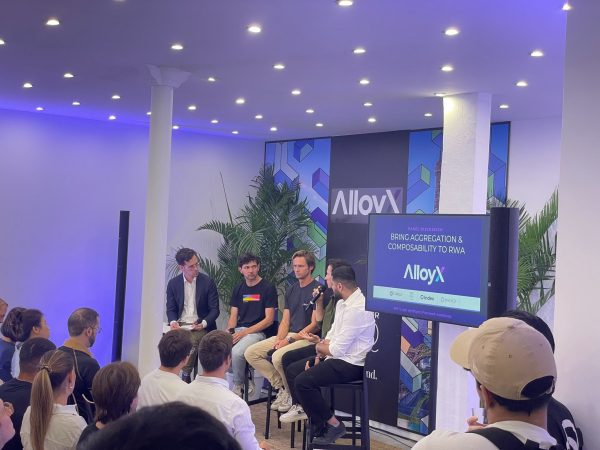Lisbon in 2022: Crypto Is Still Thriving In Europe
***Notes from Paris and ETHcc 2023:
When I sat down to write this post, I couldn’t help but channel some wisdom from Howard Marks, one of my favourite investors and co-founder of Oaktree Capital Management.
“Scepticism and pessimism aren’t synonymous. Scepticism calls for pessimism when optimism is excessive. But it also calls for optimism when pessimism is excessive.”
There’s been a torrent of pessimism over the past year against crypto and blockchain technology in general. As such, it’s not surprising that funding is down 83% year over year. Despite the slowdown, we recently spent two and a half days in Paris for ETHcc to gauge the current degree of optimism. While the energy was not on par with the 2021 bull market, it was significantly better than 2022. Five thousand people descended on Paris for the event. Making the already strained hotel supply acute.
We spoke to several VCs who felt that the bottom had passed sometime in the early half of 2023, and that the market had returned to some level of normality, if you can ever call anything in crypto normal. The majority of investors believe that now is the time to put capital to work before a new bull run occurs in 2-3 years’ time. Recent bull runs have been sparked by advancements in technology like decentralised finance (DeFi) in the summer of 2020 and the rise of NFTs shortly thereafter. What will the catalyst be for the next cycle? It’s hard to say, but we’ve been excited by the intersection of AI and crypto, as well as the increasing number of real-world assets (RWA) on-chain.
*** AI & Crypto: A match made in heaven?
Our manager Inflection has been working at the intersection of AI and blockchains for years. They’ve been exploring how to align AI with our human goals and how to make sense of a world awash in AI generated content. How do we decide what is real, and what isn’t in a world of autonomous agents and machine-generated content? To find answers to some of these questions, they co-hosted the Augment Hackathon (https://www.augmenthack.xyz). A hackathon at the intersection of these two disciplines.

The event was held at Station F, a former railroad depot building, and now startup hub in Paris. It was sponsored by a who’s who of AI crypto projects, influential companies, and VCs. A full list of winners can be found here: https://twitter.com/augmenthack/status/1682020861027688449. Participants worked on a variety of applications but those that stood out had real world applications. For example, EasyCraft, built a decentralised marketplace that enables bidding on spare capacity in manufacturing facilities. Please see their video demo below.
If you are interested in this intersection, please follow Inflection’s, most recent investment in Fabric Cryptography, creators of next-generation cryptographic hardware (https://www.fabriccryptography.com).
***Real world assets: Has the time come?
DeFi has recently witnessed a significant surge in the integration of real-world assets. There’s a desire to bridge the traditional financial world with the innovations inherent in blockchains. Today’s platforms are exploring ways to tokenise assets like real estate, commodities, and revenue streams from various industries (e.g., Music royalties: Catalog, Another Block). Real world assets on-chain not only enhances the potential for broader asset diversification but also introduces a new level of transparency, liquidity, and accessibility to otherwise illiquid and exclusive markets. As the DeFi landscape evolves, the inclusion of real-world assets is poised to reshape the financial industry by unlocking novel opportunities for investors and stakeholders alike.
Our portfolio company AlloyX hosted an event focused on investing in such assets. AlloyX is a DeFi protocol that makes it easy and accessible for protocols, DAOs and institutional investors to build diversified investment strategies from real-world assets. Today this is primarily done via the integration of debt instruments into blockchains, encompassing sovereign debt (treasury bills), corporate debt, and debt from emerging markets. This is all taking shape behind the scenes, far from the noise that crypto normally generates.

If you would like to dive deeper into this space, please see Bank of America’s recent report on RWAs: https://rsch.baml.com/access?q=s-i517792VNkDKydHLEioQ. The bank believes that the tokenisation of real-world assets will be the “key driver of digital asset adoption.” We agree, and believe our portfolio is well positioned to take advantage of this trend thanks to our manager, very early ventures.
***Where is crypto VC going?
Most of the VCs we spoke to in Paris believed that the bottom had passed, at least in the liquid market (i.e., tokens). More than one VC felt that infrastructure is potentially overpriced in the private market, as many VCs appear focused there rather than on applications (one consumer-focused VC explained that in infrastructure, business models are often overlooked as something to be worked out in 3–5 years’ time). Conversely, the application layer continues to be shunned by most investors, as many believe that scaling and developer tools need further work before mass adoption can occur.
Regardless of the cycle, we remain confident that the real-world applications above are creating efficiencies in traditionally intermediated markets (e.g, supply chains, bond issuance, carbon credits). Despite these use cases, and growing institutional adoption, blockchain-based investments are still viewed sceptically by many traditional VCs. To us, this means it’s still somewhat contrarian. When smart, ambitious engineers collide with contrarian thinking, we pay attention. That’s why we continue to have an allocation to the space in our core fund of funds. We don’t know where we are in the cycle, but it appears that applications are emerging, and for that, we are excited about the future.



